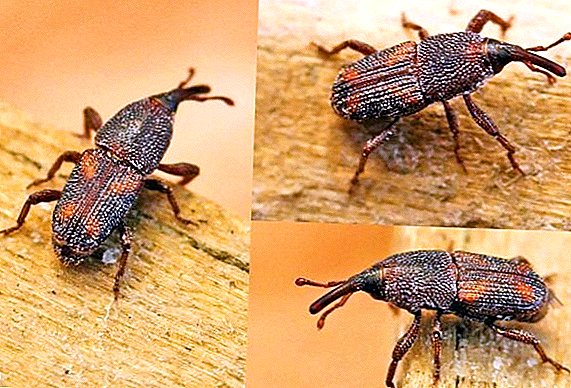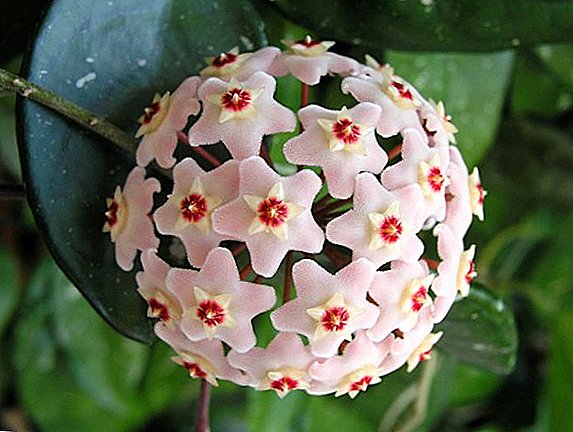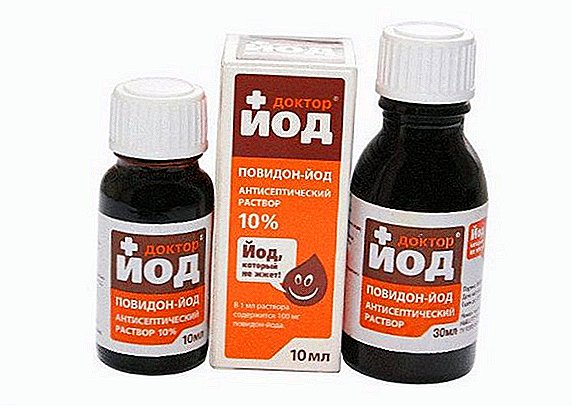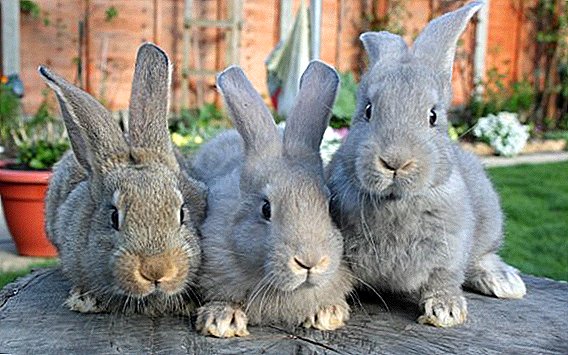 Like all pets, rabbits are susceptible to various diseases, so you need to pay attention to the symptoms that can be a manifestation of these diseases. One of these symptoms is watery eyes. This can be caused by both easily resolvable causes and evidence of serious health problems or animal welfare conditions.
Like all pets, rabbits are susceptible to various diseases, so you need to pay attention to the symptoms that can be a manifestation of these diseases. One of these symptoms is watery eyes. This can be caused by both easily resolvable causes and evidence of serious health problems or animal welfare conditions.
Why does a rabbit have watery eyes and what to do
The list of factors that cause increased tearing in rabbits is quite long - from damage to the eyeball to reaction to certain medications or chemicals. Consider these factors in more detail.
Did you know? Rabbits are close relatives of hares, but unlike hares, they prefer to arrange underground holes and live in groups. In the wild, the average life expectancy of a rabbit is only a year, but they live 10–12 years in captivity (the record is 19 years).
Eye damage
Damage to rabbit eyes can be mechanical or chemical. Mechanical damage is caused by various reasons: fights between males, sticking eyes in the straw, bruises on the corners and ledges of a frightened animal, etc. An eye damaged in this way is usually closed and abundantly watery, swelling of the eyelid may be observed.  In most cases, such injuries pass by themselves. If, however, there are serious concerns about the health of the animal, you can show it to the vet.
In most cases, such injuries pass by themselves. If, however, there are serious concerns about the health of the animal, you can show it to the vet.
As a preventive measure in order to avoid a secondary infection, the eye is infused with chamomile extract and a broad-spectrum antibiotic is used (for example, Baytril 2.5%), but this measure must be coordinated with the veterinarian.
In order to properly organize the care and maintenance of eared animals, it is necessary to become familiar with all the subtleties of breeding rabbits at home.
Chemical damage is usually caused by ammonia evaporation. Its source is rabbit urine in an uncleaned cage. In this case, it is enough to organize regular cleaning of the cell and the tearing will stop. Both chemical and mechanical damage can lead to diseases such as keratitis and conjunctivitis.
Dust, dust
Due to drafts, particles of litter or feed (especially hay), as well as debris from the surrounding area can get into the animal's eyes. In such cases, they are enough to rinse with chamomile extract or strong brewed tea.  As a preventive measure, you should more often clean the cage and the room in which it is located, and also avoid drafts. In addition, it is not recommended to use sawdust as a litter.
As a preventive measure, you should more often clean the cage and the room in which it is located, and also avoid drafts. In addition, it is not recommended to use sawdust as a litter.
Important! Hay, affected by mold fungi, is called “dusty” in a dusty cloud rising in the air as it is shaken. In fact, this is not road dust, but fungal spores. Such hay can be used after soaking it for 10 minutes in water or after treating this product with steam in a special installation.
Draft
Drafts, as mentioned above, lift into the air any litter that causes increased tears separation. In addition, they can cause colds, one of the symptoms of which is tearing. Due to the drafts of animals, conjunctivitis can also develop. To avoid this, simply eliminate the sources of drafts.
The accumulation of food waste in the cage
Non-retractable and accumulated food waste can also cause excessive tearing in animals over time. It is very easy to cope with the problem; it is enough to adhere to the rules of hygiene regularly — clean the feeder in time and regularly change the litter in which food remains are accumulated. 
Allergic reactions to feed
A fairly common cause of tearing is an allergy to certain vegetables and fruits, as well as to strong chemical or perfume smells. In addition, such a reaction can cause hay or fresh grass, which lost plants harmful to rabbits.
In addition, normal hay can be affected by mold, which causes, among other things, tearing. To cope with the problem, you must install an allergen and eliminate it from the diet or eliminate the source of the smell that is unpleasant for rabbits.
Proper nutrition for rabbits is necessary. Read about when and how to feed eared animals at home, as well as consider the feeding habits of rabbits in winter.
Lack of vitamins
With avitaminosis, the eyelids of the animal swell, the eyes do not open fully, and tears are intensely released. With a lack of vitamins A or B2, conjunctivitis may develop. With vitamin deficiency fight by introducing into the diet of vitamin supplements, or make a rabbit diet more diverse and balanced. 
Vaccine response
Vaccination is the most effective way to protect rabbits from dangerous infectious diseases. In some cases, allergic reactions of the animal to the administration of the vaccine are observed. This can be not only tearing, but also other symptoms, up to the loss of consciousness of animals.
When conducting a vaccination by a veterinarian, in such cases, for the relief of an attack, special means are administered to the animal, for example Suprastin. If vaccination is carried out independently, then it makes sense to stock up just in case with such means. Their composition and dosage are recommended to be coordinated with the veterinarian.
Read the Rabbivak V rabbit vaccine instructions.
How and what to treat diseases that cause eye phlegm
There are a number of diseases that cause intense tearing in rabbits. Let us consider in more detail the methods and means used in the treatment of such diseases.
Conjunctivitis
Symptoms of this disease are redness of the mucous membranes, photophobia, puffiness, watery eyes. When the disease is neglected or when its infectious form is observed, purulent discharges may be observed. During treatment, the eyes are washed with Furacilin solution, using one tablet per half glass of water.  In order to remove dried discharge, use a 3% solution of boric acid. For an eyelid of an animal, an antibacterial drug is applied, for example, tetracycline ointment, but it is recommended to coordinate this procedure with a veterinarian.
In order to remove dried discharge, use a 3% solution of boric acid. For an eyelid of an animal, an antibacterial drug is applied, for example, tetracycline ointment, but it is recommended to coordinate this procedure with a veterinarian.
Consider in more detail the causes of conjunctivitis in rabbits and the methods of its treatment.
Keratitis
Keratitis is called corneal inflammation. In this disease, the cornea becomes cloudy and becomes covered with a grid of blood vessels, the animal develops photophobia, tearing, eye mucus is secreted. The disease develops very quickly, so it is important to detect it at the initial stage and show the animal to the veterinarian.  In advanced cases, keratitis develops into a corneal ulcer or uveitis (inflammation of the eye vessels), with the result that the rabbit is deprived of its eye. For the treatment of keratitis used various antibiotics. The type of medicine (ointment, drops, injections) and its dosage is determined by the veterinarian.
In advanced cases, keratitis develops into a corneal ulcer or uveitis (inflammation of the eye vessels), with the result that the rabbit is deprived of its eye. For the treatment of keratitis used various antibiotics. The type of medicine (ointment, drops, injections) and its dosage is determined by the veterinarian.
Cold
The common cold is usually accompanied not only by tearing, but also by a runny nose, sneezing, general lethargy. To treat an animal, it is enough to change the mode of its maintenance: eliminate drafts, raise the room temperature for a while.
Rabbit leaders should learn how to treat a runny nose in rabbits and what to do if the rabbit sneezes.
If such measures are taken, then the animal usually bounces back on its own, after 2-3 days. If the measures taken did not help, it is recommended to contact your veterinarian. 
Tear duct obstruction (dacryocystitis)
Tearing can be caused by blockage of the nasal duct. Often this problem occurs in newborns of baby rabbits. In this case, with proper care of the animal, the nasolacrimal canal after a while returns to normal by itself. However, canal blockage can also be caused by abnormal growth of the molar teeth (the so-called dacryocystitis) or infection.
Did you know? The rabbit can simultaneously bear two offspring conceived at different times from different partners. It is believed that if the breeding of rabbits did not restrict external factors, then in 90 years there would be a rabbit on every square meter of the earth's surface.
Treatment is possible only in a veterinary clinic. Usually, a catheter is inserted into the canal under local anesthesia and washed with saline, to which antibiotics are added, if necessary. Possible removal of the problem tooth. 
Inversion
In this pathology (another name for it is "entropium"), the cilia fall into the fold between the cornea and the eyelid. As a result, the cornea is injured, inflammatory processes begin, etc. Inversion can be caused by various reasons: heredity or as a complication after eye disease. This problem can only be resolved by surgery.
Important! The treatment of follicular and fibrinous forms of conjunctivitis can only be done by a veterinarian, as they require some surgical procedures.
Teeth are cut
In some cases, the so-called "hooks" appear on the teeth because the teeth of the animals do not grind properly. These hooks injure the oral cavity and touch the nasolacrimal canals, which leads to tearing. To solve the problem, hard vegetables and fruits (carrots, apples, etc.), as well as hay and straw are introduced into the rabbit's diet.
If necessary, the cutters periodically undermine with a special cutter. In some cases, the veterinarian decides to remove problem teeth. Sometimes pet owners shorten rabbit teeth on their own with nippers, but this method is traumatic and fraught with infection.  We shorten the teeth of the rabbit
We shorten the teeth of the rabbit
Preventive measures
Timely preventive measures significantly reduce the risk of tearing in rabbits. It is recommended to take the following preventive measures:
- regular cleaning of the rabbit cage (preferably twice a day), cleaning the room with the rabbits there, observance of the rules of hygiene;
- exclusion of sources of strong odors;
- avoid drafts in the room with rabbits;
- treatment with water or steam of hay affected by a mold fungus;
- the correct diet of the animal with the obligatory inclusion of hay and hard vegetables or fruits;
- periodic inspection of the animal for the early detection of symptoms;
- conducting preventive vaccination.
 Solid vegetables in the diet of rabbits reduce the risk of tearing
Solid vegetables in the diet of rabbits reduce the risk of tearingAs you can see, there are many factors due to which the eyes of rabbits are watery. This may be caused by the conditions of their detention, various diseases or congenital abnormalities. In almost all cases, the situation can be corrected, the main thing is to detect the problem in time and not delay the adoption of measures to eliminate negative factors.












